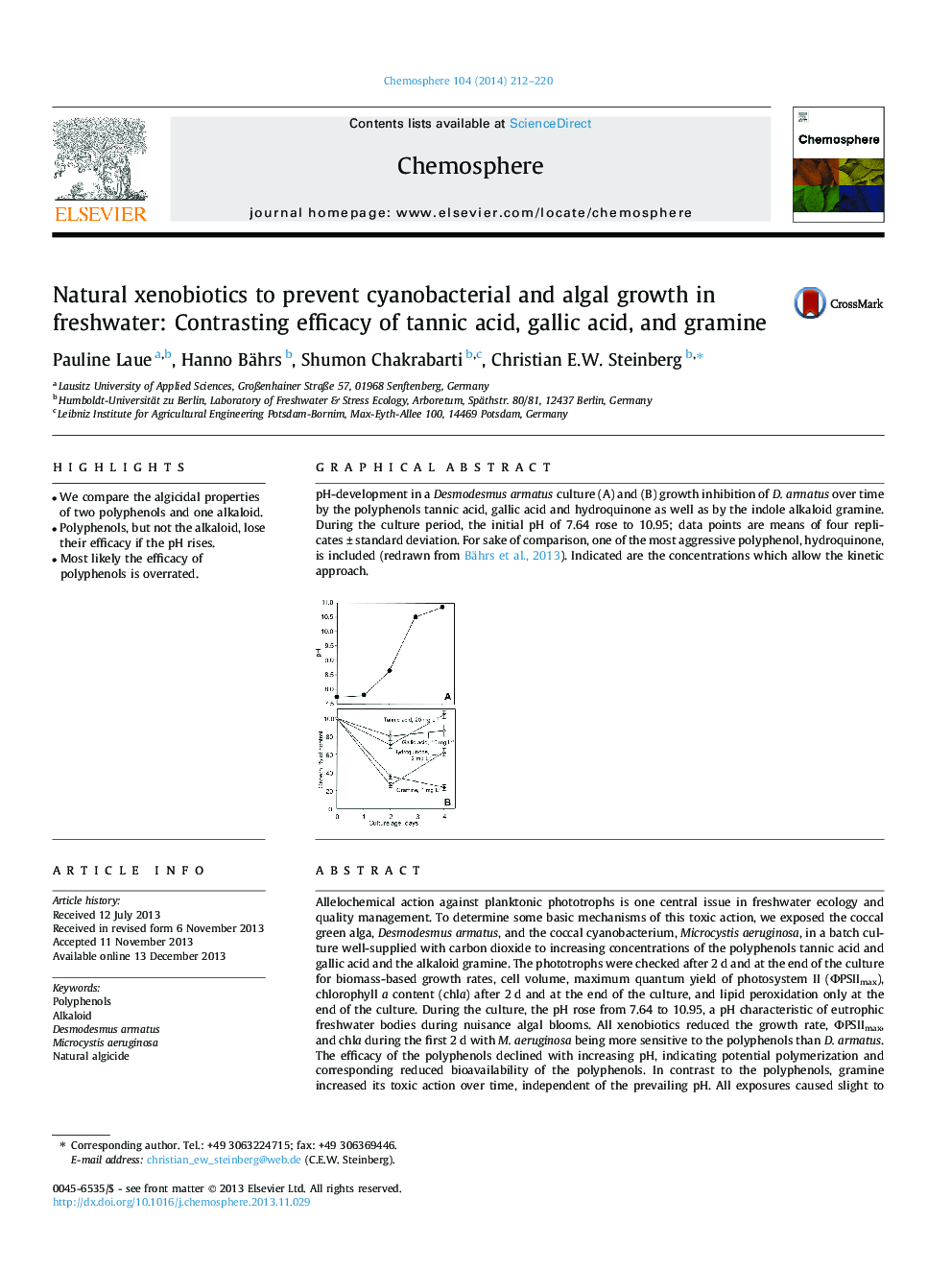| کد مقاله | کد نشریه | سال انتشار | مقاله انگلیسی | نسخه تمام متن |
|---|---|---|---|---|
| 4408843 | 1618867 | 2014 | 9 صفحه PDF | دانلود رایگان |

• We compare the algicidal properties of two polyphenols and one alkaloid.
• Polyphenols, but not the alkaloid, lose their efficacy if the pH rises.
• Most likely the efficacy of polyphenols is overrated.
Allelochemical action against planktonic phototrophs is one central issue in freshwater ecology and quality management. To determine some basic mechanisms of this toxic action, we exposed the coccal green alga, Desmodesmus armatus, and the coccal cyanobacterium, Microcystis aeruginosa, in a batch culture well-supplied with carbon dioxide to increasing concentrations of the polyphenols tannic acid and gallic acid and the alkaloid gramine. The phototrophs were checked after 2 d and at the end of the culture for biomass-based growth rates, cell volume, maximum quantum yield of photosystem II (ΦPSIImax), chlorophyll a content (chla) after 2 d and at the end of the culture, and lipid peroxidation only at the end of the culture. During the culture, the pH rose from 7.64 to 10.95, a pH characteristic of eutrophic freshwater bodies during nuisance algal blooms. All xenobiotics reduced the growth rate, ΦPSIImax, and chla during the first 2 d with M. aeruginosa being more sensitive to the polyphenols than D. armatus. The efficacy of the polyphenols declined with increasing pH, indicating potential polymerization and corresponding reduced bioavailability of the polyphenols. In contrast to the polyphenols, gramine increased its toxic action over time, independent of the prevailing pH. All exposures caused slight to severe lipid peroxidation (LPO) in the phototrophs. Hence, one mechanism of growth inhibition may be oxidative stress-mediated reduction in photosynthesis. The presented results suggest that in successful field trials with leachate, the prevailing environmental conditions may inactivate polyphenols and xenobiotics other than polyphenols may be more effective.
pH-development in a Desmodesmus armatus culture (A) and (B) growth inhibition of D. armatus over time by the polyphenols tannic acid, gallic acid and hydroquinone as well as by the indole alkaloid gramine. During the culture period, the initial pH of 7.64 rose to 10.95; data points are means of four replicates ± standard deviation. For sake of comparison, one of the most aggressive polyphenol, hydroquinone, is included (redrawn from Bährs et al., 2013). Indicated are the concentrations which allow the kinetic approach.Figure optionsDownload as PowerPoint slide
Journal: Chemosphere - Volume 104, June 2014, Pages 212–220